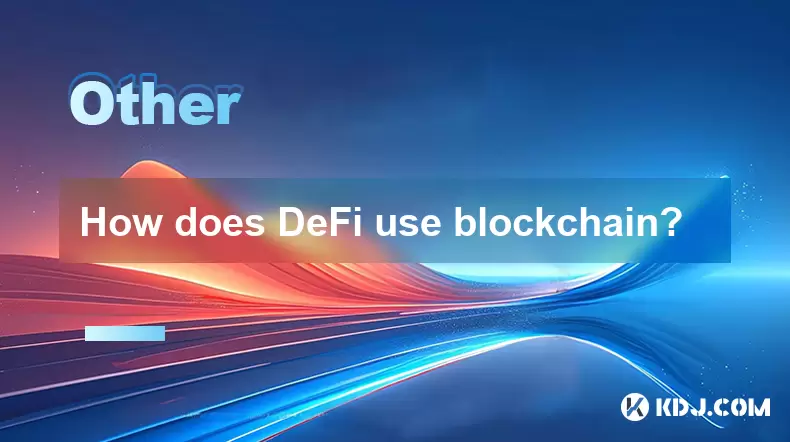-
 Bitcoin
Bitcoin $114400
1.85% -
 Ethereum
Ethereum $3496
2.62% -
 XRP
XRP $2.916
4.75% -
 Tether USDt
Tether USDt $0.9999
0.02% -
 BNB
BNB $751.9
1.74% -
 Solana
Solana $161.2
2.07% -
 USDC
USDC $0.9998
0.00% -
 TRON
TRON $0.3263
1.56% -
 Dogecoin
Dogecoin $0.1987
3.05% -
 Cardano
Cardano $0.7251
4.06% -
 Hyperliquid
Hyperliquid $38.43
4.78% -
 Stellar
Stellar $0.3966
8.00% -
 Sui
Sui $3.431
3.15% -
 Chainlink
Chainlink $16.27
4.03% -
 Bitcoin Cash
Bitcoin Cash $543.3
3.53% -
 Hedera
Hedera $0.2480
8.38% -
 Ethena USDe
Ethena USDe $1.001
0.03% -
 Avalanche
Avalanche $21.38
2.30% -
 Toncoin
Toncoin $3.640
3.41% -
 Litecoin
Litecoin $109.2
3.30% -
 UNUS SED LEO
UNUS SED LEO $8.956
-0.15% -
 Shiba Inu
Shiba Inu $0.00001219
3.22% -
 Polkadot
Polkadot $3.602
3.15% -
 Uniswap
Uniswap $9.153
4.03% -
 Monero
Monero $301.2
3.86% -
 Dai
Dai $0.9999
-0.01% -
 Bitget Token
Bitget Token $4.320
1.80% -
 Pepe
Pepe $0.00001046
4.06% -
 Cronos
Cronos $0.1321
5.83% -
 Aave
Aave $259.0
3.73%
How much will the security requirements of blockchain system development add to the costs?
Blockchain security costs can increase development budgets by 10-50%, depending on project scale, with factors like encryption, audits, and consensus mechanisms contributing to expenses.
Apr 15, 2025 at 05:01 am

The development of a blockchain system involves various aspects, including security, which is a critical component that can significantly impact the overall costs. Understanding how much the security requirements of blockchain system development add to the costs requires a detailed examination of several factors. This article will delve into the different elements that contribute to the security costs of blockchain development, providing a comprehensive overview of the financial implications.
Understanding Blockchain Security
Blockchain security is paramount because the technology is designed to be decentralized and immutable, making it a prime target for cyberattacks. The security measures implemented in a blockchain system are intended to protect against various threats, including 51% attacks, double-spending, and smart contract vulnerabilities. These measures can range from basic encryption to complex consensus mechanisms and multi-signature wallets.
Key Components of Blockchain Security
Several key components contribute to the security of a blockchain system, each adding to the overall development costs:
Encryption: Encryption is fundamental to securing data on a blockchain. The use of advanced encryption algorithms like AES or RSA can increase costs due to the need for specialized expertise and computational resources.
Consensus Mechanisms: Consensus mechanisms such as Proof of Work (PoW) or Proof of Stake (PoS) are crucial for maintaining the integrity of the blockchain. Implementing these mechanisms can be costly, especially PoW, which requires significant computational power.
Smart Contract Audits: Smart contracts are self-executing contracts with the terms directly written into code. Auditing these contracts for vulnerabilities is essential but can be expensive, often requiring the services of specialized firms.
Network Security: Network security involves protecting the nodes and communication channels within the blockchain network. This can include firewalls, intrusion detection systems, and secure communication protocols, all of which add to the costs.
Multi-signature Wallets: Multi-signature wallets require multiple signatures to authorize transactions, adding an extra layer of security. Developing and maintaining these wallets can increase the overall security budget.
Cost Factors in Blockchain Security
The costs associated with blockchain security can be broken down into several categories:
Development Costs: Hiring experienced developers who specialize in blockchain security can be expensive. These professionals are in high demand, and their salaries reflect their expertise.
Infrastructure Costs: The hardware and software required to run a secure blockchain network can be costly. This includes servers, storage, and the necessary bandwidth to handle transactions securely.
Audit and Compliance Costs: Regular audits and compliance checks are necessary to ensure the blockchain system meets industry standards and regulatory requirements. These services can be costly, especially for enterprises operating in highly regulated industries.
Maintenance and Upgrades: Ongoing maintenance and upgrades are essential to keep the blockchain system secure. This includes patching vulnerabilities, updating software, and possibly migrating to new consensus mechanisms as technology evolves.
Case Studies: Real-World Examples
To better understand the impact of security requirements on costs, let's look at a few real-world examples:
Bitcoin: Bitcoin's use of PoW as a consensus mechanism has led to significant energy consumption and hardware costs. The security of the network is maintained by miners who invest in powerful computing equipment, contributing to the overall cost of the system.
Ethereum: Ethereum's transition from PoW to PoS (Ethereum 2.0) is an example of how security considerations can drive major changes in a blockchain system. The development and implementation of PoS have required substantial investment in research and development.
Decentralized Finance (DeFi) Platforms: DeFi platforms often rely on smart contracts, which must be thoroughly audited to prevent hacks and exploits. The cost of these audits can be significant, as seen in the case of platforms like Compound and Aave, which have invested heavily in security.
Estimating the Additional Costs
Estimating the exact additional costs due to security requirements can be challenging, as it depends on the specific needs and scale of the blockchain project. However, some general guidelines can help in understanding the financial impact:
Small-Scale Projects: For small-scale blockchain projects, the additional security costs might range from 10% to 20% of the total development budget. This includes basic encryption, simple consensus mechanisms, and minimal auditing.
Medium-Scale Projects: Medium-scale projects might see an increase of 20% to 30% in costs due to more complex security measures, such as advanced consensus mechanisms and more thorough smart contract audits.
Large-Scale Projects: Large-scale projects, especially those in highly regulated industries, can see security costs increase by 30% to 50% or more. This includes comprehensive audits, compliance checks, and robust network security measures.
Mitigating Security Costs
While security is non-negotiable, there are strategies to mitigate the associated costs:
Open-Source Solutions: Utilizing open-source blockchain platforms and security tools can reduce development costs. Platforms like Hyperledger Fabric and Ethereum offer robust security features that can be customized to fit specific needs.
Outsourcing: Outsourcing certain security tasks, such as smart contract audits, to specialized firms can be more cost-effective than building an in-house team. This approach allows access to expertise without the overhead of full-time employees.
Phased Implementation: Implementing security measures in phases can help manage costs. Starting with basic security and gradually adding more advanced features as the project grows can spread out the financial burden.
Security as a Service (SECaaS): Some companies offer Security as a Service, providing ongoing security monitoring and management for a subscription fee. This can be a cost-effective way to maintain high security standards without a large upfront investment.
Frequently Asked Questions
Q: Can the use of less secure consensus mechanisms reduce costs significantly?
A: While less secure consensus mechanisms might reduce initial costs, they can lead to higher long-term expenses due to increased vulnerability to attacks. It's crucial to balance cost with the level of security required for the specific use case.
Q: How do regulatory requirements impact the security costs of blockchain development?
A: Regulatory requirements can significantly increase security costs, as compliance often necessitates additional audits, reporting, and security measures. Projects operating in highly regulated industries, such as finance or healthcare, will see higher security-related expenses.
Q: Are there any blockchain platforms that are inherently more cost-effective in terms of security?
A: Some blockchain platforms, like Hyperledger Fabric, are designed with enterprise security in mind and can be more cost-effective for certain use cases. However, the cost-effectiveness depends on the specific needs of the project and the level of customization required.
Q: How can a project determine the appropriate level of security investment?
A: Determining the appropriate level of security investment involves assessing the project's risk profile, the value of the assets being protected, and the potential impact of a security breach. Consulting with security experts and conducting a thorough risk assessment can help in making informed decisions about security investments.
Disclaimer:info@kdj.com
The information provided is not trading advice. kdj.com does not assume any responsibility for any investments made based on the information provided in this article. Cryptocurrencies are highly volatile and it is highly recommended that you invest with caution after thorough research!
If you believe that the content used on this website infringes your copyright, please contact us immediately (info@kdj.com) and we will delete it promptly.
- Bitcoin Price Wobbles: Options Analysis Points to Bullish Undercurrent Despite Dip
- 2025-08-04 04:30:12
- Ark Invest, Coinbase, and Bitcoin: Decoding the Crypto Investment Landscape in NYC
- 2025-08-04 04:30:12
- LILPEPE, Cardano, and Shiba Inu: The 2025 Crypto Landscape
- 2025-08-04 04:50:12
- Cold Wallet, Token Rewards, and Crypto Usage: A New Era?
- 2025-08-04 04:50:12
- Navigating the Wild West: Token Unlocks and Altcoin Surges - A Trader's Guide
- 2025-08-04 02:30:11
- AI, Crypto, and the Frontier: Riding the Wave of Innovation
- 2025-08-04 03:50:11
Related knowledge

What is the difference between on-chain and off-chain transactions?
Aug 02,2025 at 04:22pm
Understanding On-Chain TransactionsOn-chain transactions refer to digital asset transfers that are recorded directly on a blockchain ledger. These tra...

What is a node's role in a blockchain network?
Aug 03,2025 at 03:16pm
Understanding the Function of a Node in a Blockchain NetworkA node is a fundamental component of any blockchain network, acting as a participant that ...

How are transactions verified on a blockchain?
Aug 04,2025 at 12:35am
Understanding the Role of Nodes in Transaction VerificationIn a blockchain network, nodes are fundamental components responsible for maintaining the i...

What is the double-spending problem and how does blockchain prevent it?
Aug 02,2025 at 01:07pm
Understanding the Double-Spending ProblemThe double-spending problem is a fundamental challenge in digital currency systems where the same digital tok...

What is the difference between a blockchain and a database?
Aug 01,2025 at 09:36pm
Understanding the Core Structure of a BlockchainA blockchain is a decentralized digital ledger that records data in a series of immutable blocks linke...

How does DeFi use blockchain?
Aug 03,2025 at 11:15pm
Understanding the Role of Blockchain in DeFiDecentralized Finance (DeFi) relies fundamentally on blockchain technology to operate without intermediari...

What is the difference between on-chain and off-chain transactions?
Aug 02,2025 at 04:22pm
Understanding On-Chain TransactionsOn-chain transactions refer to digital asset transfers that are recorded directly on a blockchain ledger. These tra...

What is a node's role in a blockchain network?
Aug 03,2025 at 03:16pm
Understanding the Function of a Node in a Blockchain NetworkA node is a fundamental component of any blockchain network, acting as a participant that ...

How are transactions verified on a blockchain?
Aug 04,2025 at 12:35am
Understanding the Role of Nodes in Transaction VerificationIn a blockchain network, nodes are fundamental components responsible for maintaining the i...

What is the double-spending problem and how does blockchain prevent it?
Aug 02,2025 at 01:07pm
Understanding the Double-Spending ProblemThe double-spending problem is a fundamental challenge in digital currency systems where the same digital tok...

What is the difference between a blockchain and a database?
Aug 01,2025 at 09:36pm
Understanding the Core Structure of a BlockchainA blockchain is a decentralized digital ledger that records data in a series of immutable blocks linke...

How does DeFi use blockchain?
Aug 03,2025 at 11:15pm
Understanding the Role of Blockchain in DeFiDecentralized Finance (DeFi) relies fundamentally on blockchain technology to operate without intermediari...
See all articles

























































































